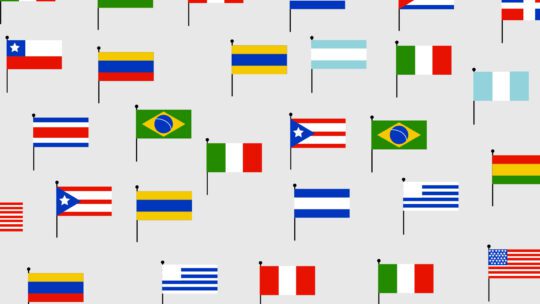
As we know, diversity has become a topic in the public square. Many companies realize the full force of implementing diverse, equitable and inclusive policies. As Latinos conclude celebrating Hispanic Heritage Month this week, emphasizing representation remains relevant as ever.
In 2020, we looked at how DEI could bond communication and Hispanics. As communication professionals, one of our jobs is creating platforms for the underrepresented to tell stories. When Hispanics see themselves represented, they feel properly epitomized.
More than 60 million Latinos (20 percent of the U.S. population) hail from various countries, with different cultures, heritages, customs, traditions and consumption patterns. Each brings a flavor to storytelling, which can entice audiences of all backgrounds.
PR parlance: Latino or Latinx?
U.S.-born Latino youth, who within the last decade experienced the fastest population growth, consider themselves Latino. They remain eager to embrace their heritage, even though their acculturation and speaking levels are predominantly English-leaning.
In recent years, the term Latinx has become controversial because of its exclusive use in the U.S. and lack of inclusivity. Latinx is a gender-neutral term identifying men, women, and LGBTQIA+ people of Latin American lineage.
Latinx is one of many broad labels trying to describe a large, diverse community. Its use remains up for debate. But it’s best to avoid it unless you’re addressing younger individuals who are pro-gender equity.
Remote work and multicultural communication
It’s been almost two years since the COVID-19 pandemic started. The corporate landscape certainly has changed. Remote work likely is here to stay. Emergence of the hybrid workplace is making itself known. It's uncertain whether this will increase or decrease the organizational challenge of establishing more effective multicultural communication, especially among Hispanics.
A media backslide
The prominence of multiculturalism in media is very noticeable. But it's been painfully slow.
Moreover, there are signs that brands are returning to an earlier mindset, with Hispanic outreach minimized yet again. Eliminating multicultural strategic efforts leads to messaging that's generic and general.
Leadership, transparency and research
Whether for internal or external communication, organizations need to have cognizant, transparent voices in positions of power. How? Through research, where brands learn what motivates audiences. In addition, research will help provide trustworthy, reliable information and the best mediums to transmit messaging.
Welcoming tough conversations
In this COVID era, companies must welcome having complex, frank and open discussions, especially around colorism, race, representation and culture. Facilitating transparent dialogues strengthens perspective.
Building internal and external platforms for the underrepresented can shape the direction of multicultural communication. There is no need for corporations to fear this. Open forum procedures will make it easier for Latino employees to speak up and help organizations amplify inclusive viewpoints.
During Hispanic Heritage Month, the role of diversity within multiculturalism plays an integral part in how we balance our roots with an evolving society. Investment is key. It's important to continue conversations and pave pathways.
Ser un leal aliado. (Be a loyal ally.)
Yesenia Reinoso is founder & principal, Y Communicate. Follow her: @y_communicate
